From taking water for granted, to discovering water scarcity and now managing water sustainably without depending on water tankers, our Sarjapur Road community is very different from the rest of the neighbourhood suffering from water problems.
Rainbow Drive (RBD) is a gated community established in 1998-99. Till 2004, no meters in individual houses, water was supplied free. A few houses had private borewells for their own use.
After the Residents’ Welfare Association was formed in 2004, they started to meter the supplied water at a nominal charge to recover the operational cost. They also decided to ban the digging of private borewells so that entire community becomes part of comprehensive solution.
RWH and Recharge wells
In 2007, when Rainbow Drive started noticing water problems, they started working with Rainwater Club, an organisation dedicated to sustainable water management. (See the full story here.)
The Managing Committee decided to promote RWH and groundwater recharge. Committee members pledged to implement the plan in their own homes first, and then persuade the residents. In parallel, they started constructing recharge wells in storm water drains as well.
Pic: Pragya Singh
Initially, the MC provided a rebate of Rs 100 in the monthly water bill for those who implemented rainwater harvesting in their house.
Recharge well. Pic: Pragya Singh
As time passed, MC realised that water is a precious resource, it needs to price the water correctly. In 2009, both price per liter increased and slab introduced to bring home the point. The revised rate was higher than operation cost, to encourage conservation. The rate was 6 Rs per kilo litre.
Rainbow Drive water tariff slabs in 2008 (Per month)
- First 10,000 litres, Rs.10 per KL (Rs.100)
- Next 10,000 Rs.15 per KL (Rs.150)
- Next 10,000, Rs.25 per KL (Rs.250)
- Next 10,000, Rs.40 per KL (Rs.400)
- Above this, Rs.60 per KL
Water crisis starts in 2011
With number of houses increasing to around 200, demand increased, and with water table started depleting, the borewells started failing. Water supplied by the association became insufficient. Residents started ordering tankers for their needs.
The MC realised the water recharged into ground through existing recharge wells was not enough. They consulted multiple hydrogeologists/water experts to understand how to address the water shortfall. The experts suggested trapping and recharging maximum rainwater to ground through 25-30 ft deep recharge wells.
MC started stressing on RWH/Recharge for every household. (Read this primer on borewells, open wells, recharging, and underground aquifers, authored by Avinash Krishnamurthy of Rainwater Club, now known as Biome.)
Through Open House meetings, MC started educating residents on conservation of water and need for RWH/Recharge. Residents were advised not to use hose pipes for car washing, avoid daily car washing, watering the gardens only in the evening and thus, once in two days etc.
The MC revised the Water tariff to penalize wasteful usage of potable water.
Rainbow Drive water tariff slabs (Per month)
- First 15,000 litres, Rs.30 per KL -> 450 Rs min
- Next 10,000 Rs.50 per KL -> 500 Rs
- Above this, Rs.125 per KL
90% of resident manage within the 25 KL a month! And the 10% who are collecting and storing rainwater do not even use the common supply during the rainy season.
Making RWH/Recharging Mandatory
Sadly, the RWH implementation was not very successful, despite it being a government mandate. In early 2012, only 25% houses had RWH/Recharge wells. The MC then decided to enforce the RWH mandatory rule themselves. The MC organised a number of meetings to get a buy in — finally a majority of residents agreed.
MC proposed to charge water at a highly penal rate of Rs 150 per KL from those who did not implement RWH. Also, it came up with new construction guideline that new house needs to be RWH compliant to get community water connection. By that time, we had more than 300 recharge wells in the layout that covered an area of 35 acres. These steps worked. By end of Oct 2012, (within six months), every house had rainwater harvesting in place.
Rich Dividends: Borewell water at 200ft
As a result of the extensive ground recharge, our main borewell that can yield more than 3 lakh litres per day is surprisingly only 200 ft deep, water hardness is usually under 400 ppm going upto 675 ppm during the dry season. We now supply close to 1.3 lakh litres per day, enough for our 260+ families.
Recharge well. Pic: Pragya Singh
Piping rainwater to storage tanks. Pic: Pragya Singh
Rainwater collected in tannks. Pic: Pragya Singh
Closing the water loop: Reuse of treated water
RBD had two electro-mechanical Sewage Treatment Plants based on Activated Sludge Process. It was difficult to ensure quality treated water from both, consistently, and hence risky to reuse the treated water. The operations and maintenance tasks very involved, expensive and very energy intensive.
We then decided to opt for greener technologies. We first evaluated Soil Bio Technology (SBT). Soil Bio Technology, as defined by Centre for Science and Environment, is a terrestrial system for wastewater treatment which is based on the principle of trickling filter, where “a combination of physical processes like sedimentation, infiltration and biochemical processes are carried out to remove the suspended solids, organic and inorganic contents of the wastewater.” It was a good technology. The MC got the plan approved in a General Body Meeting, but residents did not come forward to pay. So our plans got stuck!
Phytorid Technology
In early 2013, BIOME introduced us to Phytorid technology. We evaluated by visiting multiple plants.
We found it a better option than SBT on three accounts: It was cheaper, easier to maintain and no odour due to no surface water.
Phytorid is a technology from National Environment Engineering Research Institute (NEERI). It involves creating constructed wetlands using plants like Elephant Grass, Cattails, Reeds, and Cannas, that are normally found in natural wetlands with filtration and treatment capability.
The Phytorid plant is expected to offset its investment in about three years. As against the 1 lakh maintenance costs for the older STP, the new Phytorid system costs only about Rs 10,000 per month for maintenance as there only two motors running at any given point in time and there are no moving parts requiring repair. The cost for setting it up plus retrofitting plumbing has been about Rs 68 lakhs. The system has a capacity to treat upto 250 KL of wastewater with the help of the 900 plants spread over 3000 sq feet!
We again started educating residents – we made presentations on the technology and discussed it threadbare in open houses. There were separate teams formed for technical evaluation, financial due diligence and execution.
Finallyresidents were convinced. We started the implementation in May 2014. By October, we had the plant functional. It was a unique, green STP in the form of a beautiful garden. No noise, no odour; only lush green plants and colourful flowers.
The Phytorid based plant! Pic: Pragya Singh
The treated water meets PCB parameters. Treated water adds to sustainability of groundwater as we do not use fresh/potable water for lawns and gardens.
And here is the treated water from the Phytorid plant, being used for growing fruits and vegetables. Every house has something or the other to offer to the neighbour from one’s own garden!
Pic: Pragya Singh
Related Articles
Iblur apartment shows the way in rainwater harvesting
BBMP’s rainwater harvesting works stillborn
Replenish aquifers with rainwater harvesting

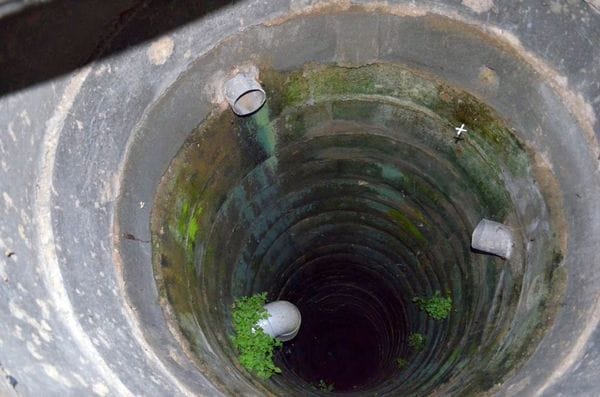
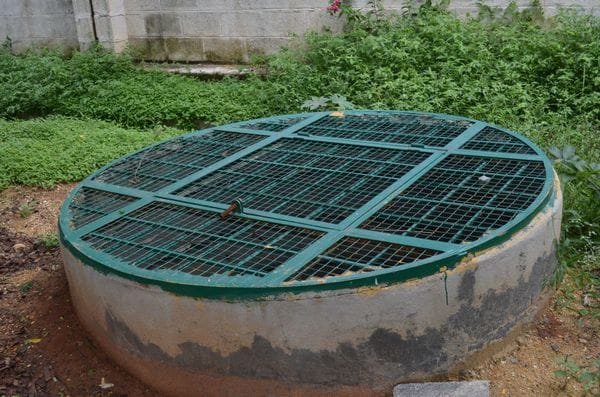
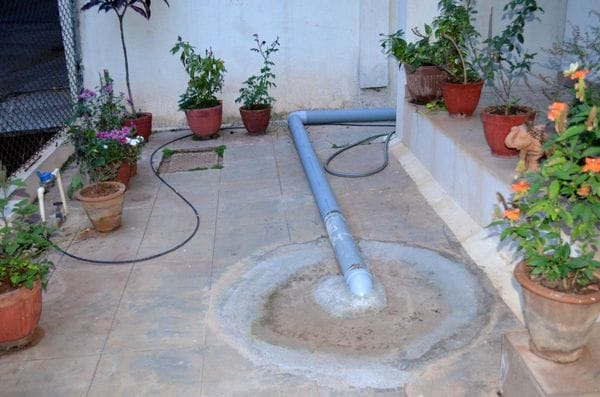
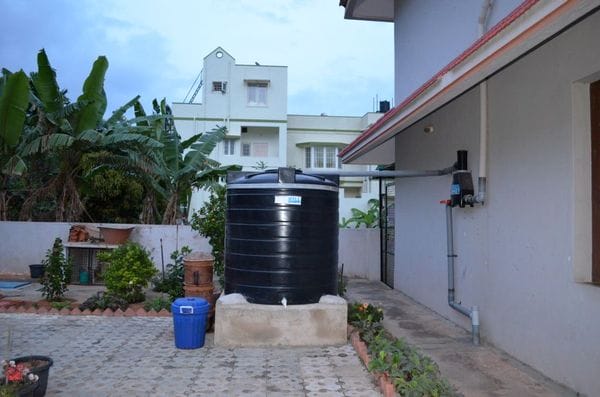
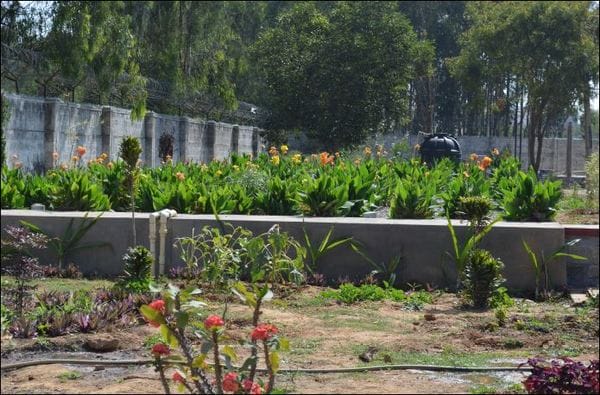
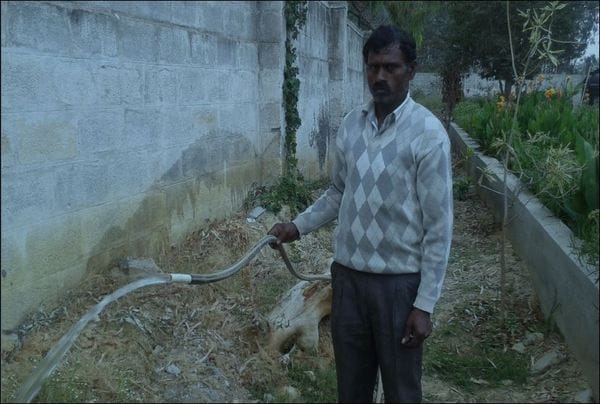
WOW. Amazing story.
Kudos to these guys for implementing such good system.
BBMP can surly learn a little from these guys
Fantastic story ! Another STP technology worth considering is ecoparadigm DTS ecoSTP which runs on zero power and have over 100 installations. The STP works even at hospitals where requirements are stringent .
http://www.thealternative.in/lifestyle/flushed-clean-128-year-old-bangalore-hospital-running-citys-greenest-sewage-treatment-plant/